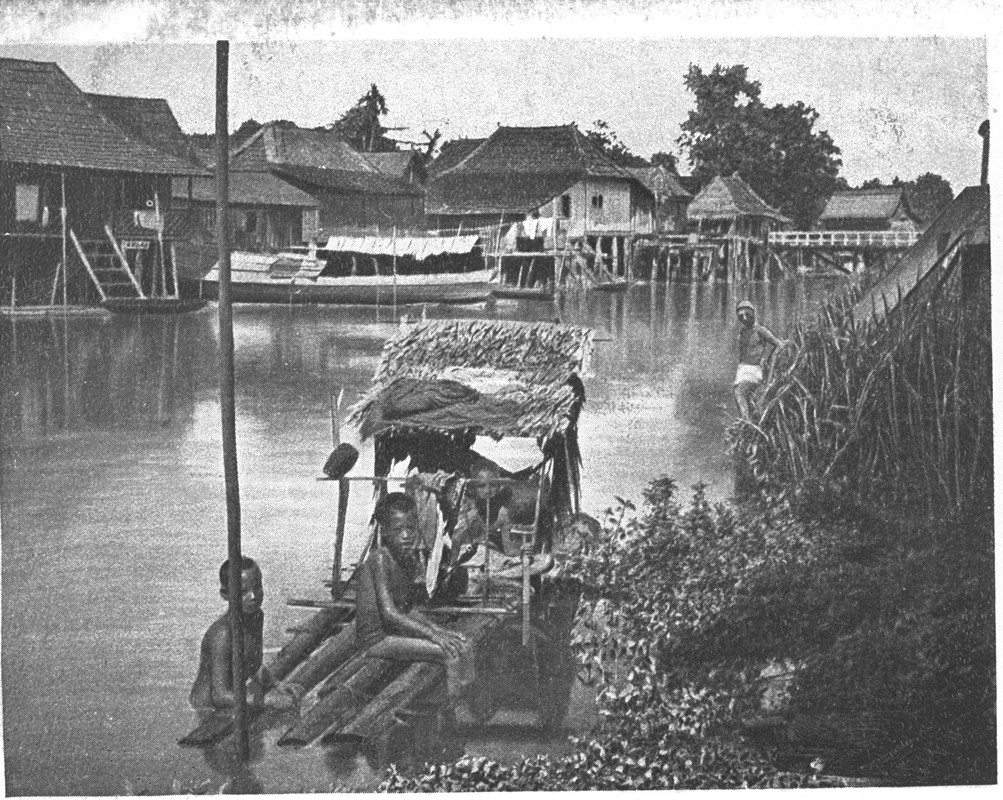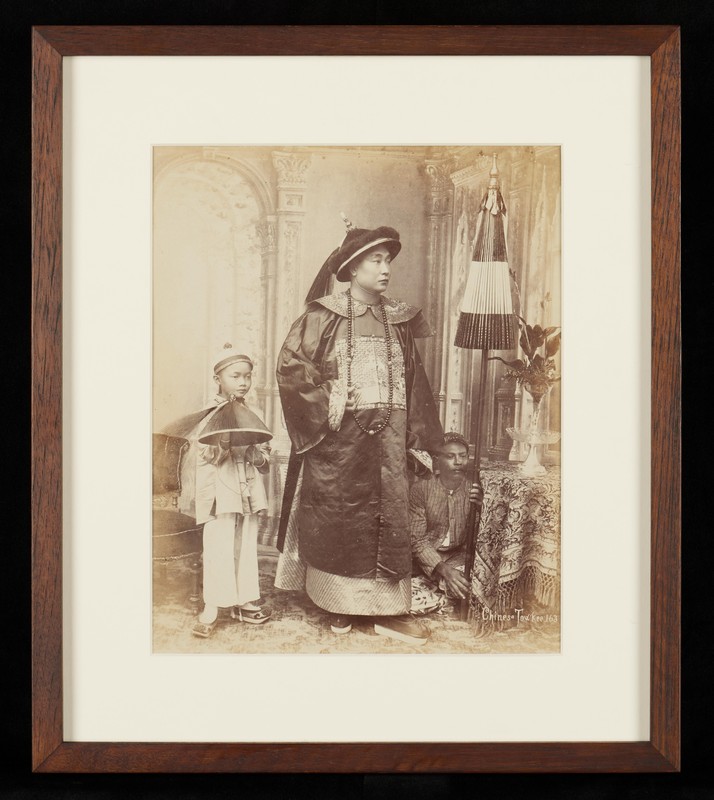Chinese communities and major dialect-groups in 19th century Singapore
After the founding of modern Singapore in 1819, the island attracted a significant influx of Chinese immigrants who travelled south from China in search of better opportunities and livelihoods. The Chinese community in Singapore gradually took shape. These immigrants were further divided into distinct subgroups based on their ancestral home and regional origins, forming respective dialect group identities.
In the early days of Chinese immigration to Singapore, many of these newcomers came from different parts of southern China. They were divided into five major dialect groups known generally as bang. These communities were the Min bang (Hokkiens) comprising immigrants from Fujian, the Guang bang (Cantonese) comprising immigrants from Guangdong, the Ke bang (Hakkas) made up of Hakka immigrants, the Chao bang (Teochews) comprising immigrants from Chaozhou, and the Qiong bang (Hainanese), made up of immigrants from Hainan.
The Hokkiens
Among the five communities, the Hokkien community had the largest population and the most significant influence, holding a dominant position in early community politics. The Hokkien-speaking people from Fujian arrived in Singapore relatively early. The earliest Hokkien cemetery, Heng San Teng, was established in 1828, just 9 years after Sir Stamford Raffles landed in Singapore in 1819. One of the distinctive features of the Hokkien community was its leadership structure, primarily dominated by prominent Chinese families from Malacca. These families had migrated to Singapore as a group at an earlier time, where they established a Hokkien community and created a second home there.
See Hoot Kee (1793–1847), Tan Tock Seng (1798–1850), and Tan Kim Seng (1805–1864) belonged to important Hokkien families who had their origins in Malacca, and held significant influence and prestige in the Chinese communities in Malacca and Singapore. See Hoot Kee was Heng San Teng’s highest leader, serving as the Director. Tan Tock Seng founded Thian Hock Keng Temple in 1840 — one of the oldest temples in Singapore — which replaced Heng San Teng as the leading institution for the Hokkien community. Tan became an important leader in the Hokkien community as a result.
Tan Kim Seng and other leaders of the Hokkien community established Chongwen Ge in 1849 and Chui Eng Si E in 1854. These are among the earliest documented private schools in Singapore.

The Teochews
After the Hokkiens, the Teochew community in Singapore was the second-largest dialect group in terms of population. The Teochews, too, had migrated to Singapore very early on. The oldest Teochew temple, Yueh Hai Ching Temple (Wak Hai Cheng Bio), existed as early as 1826, and its founding year can even be traced further back, making it older than the Hokkien community’s Thian Hock Keng Temple and Heng San Teng.
Yueh Hai Ching Temple was initially the main institution representing the Teochew community. In 1845, it was replaced by the Ngee Ann Kongsi, an organisation founded by wealthy Teochew leader and merchant Seah Eu Chin (1805–1883). That same year, the Ngee Ann Kongsi purchased Tai Shan Ting, which became the first major Teochew cemetery in Singapore. Under the leadership of the Seah family, the Ngee Ann Kongsi continued to serve as the leading institution for the Teochew community. Teochew Poit Ip Huay Kuan was established in 1929 and became another leading institution of the Teochew community.
The Seah family’s prolonged leadership of the Teochew community was due to their ownership of extensive land used for pepper and gambier cultivation. Socio-economically speaking, the early Teochew community was relatively homogeneous, with the majority of immigrants engaged in labour-intensive activities like pepper and gambier cultivation. This made it easier for major landowners like the Seah family to maintain control over the community.
Teochews were also active in cultural and educational development, with Teochew leaders collectively funding the establishment of Tuan Mong School in 1906, one of the modern schools at the time. Later, in 1940, they established the Ngee Ann Girls’ School (now Ngee Ann Primary School). Both schools were managed by the Ngee Ann Kongsi.

The Cantonese and Hakkas
The Cantonese and Hakka communities were smaller than the Hokkien and Teochew communities in terms of population, though their history of migration to Singapore was not significantly later. Existing textual records indicate that the Cantonese and Hakka communities jointly managed two cemeteries, Cheng San Teng and Loke Yah Teng. The history of Cheng San Teng can be traced back to as early as the 1820s, and it is possible that it was established when Sir Stamford Raffles founded modern Singapore in 1819.
As the Cantonese and Hakka communities were smaller in number, and enjoyed geographical proximity in China, they were willing to cooperate and jointly establish cemeteries — a unique feature not observed in other dialect groups. Though the two communities had fewer members, they could still be further divided into three major subgroups: Kwong Wai Shiu, Fong Yun Thai, and Kar Yeng. Kar Yeng and Fong Yun Thai belonged to the Hakka community, while Kwong Wai Shiu was a combination of the Hakka people from Huizhou and the Cantonese from Guangzhou and Zhaoqing. Apart from jointly managing cemeteries, these three major subgroups also collaborated in the management of the Fuk Tak Chi Temple, a temple that once represented the Cantonese and Hakka communities. However, by the late 19th century, the three subgroups had experienced ongoing conflicts and decided to separate and develop independently, and they each established their own community cemeteries. In the early 20th century, a period when the tradition of building schools was flourishing in the Singapore Chinese community, the Kwong Wai Shiu community established Yeung Ching School (now Yangzheng Primary School), while the Hakka community established Yin Sin School.
The Hainanese
Compared to the other four major dialect groups, the Hainanese arrived in Singapore at a later date and had a smaller population. It was not until as late as 1857 that Hainanese pioneers purchased land to establish their exclusive temple, the Tin Hou Kong. Simultaneously, they founded the Kiung Chow Hwee Kuan (now Singapore Hainan Hwee Kuan) within the temple’s premises, serving as the leadership organisation for the Hainanese community.
The majority of the Hainanese were devout followers of the Heavenly Empress (Tianhou), and during the early period, the Kiung Chow Hwee Kuan and Tin Hou Kong shared the same space, essentially becoming one entity. Hainanese pioneers purchased Yu Shan Ting as their community’s ancestral burial ground only in the mid-19th century and expanded the area in 1890 to establish the new Yu Shan Ting. Later, the Hainanese community founded Yock Eng High School (now Yuying Secondary School) in Prinsep Street in 1910, which also came into existence somewhat later compared to the schools of other dialect groups.

Relations between dialect groups
To sum up, the dialect group of the 19th century played a significant role in driving the development of the Singapore Chinese community. Against a backdrop of British colonial policies that often employed a “divide and rule” strategy and prioritised imperial interests, these dialect groups of Chinese immigrants sought to unite and mobilise their people by constructing burial grounds, temples, schools, and various community facilities to care for their community members’ needs, from birth to death. This ensured that the Chinese immigrant community could continue to build a home in Singapore on a strong foundation.
In the 19th century, most Chinese people were active in their respective dialect communities or bang and had limited interactions with other dialect groups. This division often led to conflicts and tensions within the Chinese community due to power struggles between groups. However, leaders from different dialect groups would interact and cooperate with one another. For instance, prominent leaders such as Tan Tock Seng of the Hokkien community, Seah Eu Chin of the Teochew community, and Hoo Ah Kay (1816–1880) of the Cantonese community were appointed as Justices of the Peace by the colonial government in the mid-19th century, serving as leaders within the Chinese community. They often worked together to resolve disputes and conflicts between dialect groups.

Towards the end of the 19th century, and the impending collapse of the Qing dynasty, Kang Youwei and Liang Qichao’s royalist ideology and Sun Yat-sen’s nationalistic revolutionary activities swept across Singapore and Malaya. These movements impacted the security and business interests of the Chinese community in Singapore. In response, the colonial government tightened its control over the Chinese community, including those on the Malay Peninsula, and worked to weaken the factional powers of the different dialect groups. As a result, there was a growing need for inter-dialect group activities and collaboration across the Chinese community.
After the turn of the 20th century, the influence of nationalist movements from China further diminished the factional consciousness within the Chinese community. The focus shifted from dialect group affiliations to a more overarching sense of patriotism towards China, emphasising the development of a larger Chinese community. After Singapore gained independence, and with the efforts of the post-independence government, there was a significant push to shape a national identity that transcended dialect group affiliations. The factional identity within the Chinese community gradually faded in Singapore.
This is an edited and translated version of 19世纪的新加坡华人方言群. Click here to read original piece.
Chen, Ching-ho and Tan, Yeok Seong, eds. Xinjiapo huawen beiming jilu [A Collection of Chinese inscriptions in Singapore]. Hong Kong: The Chinese University of Hong Kong Press, 1972. | |
Dean, Kenneth and Hue, Guan Thye, eds. Chinese Epigraphy in Singapore 1819–1911. 2 Vols. Singapore & Guangxi: National University of Singapore Press and Guangxi Normal University Press, 2017. | |
Kua, Bak Lim and Lim, How Seng. Xinhua lishi yu renwu yanjiu [Research of Singapore Chinese Historical Figures]. Singapore: South Seas Society, 1986. | |
Phua, Beng Tee. Huaren shehui yu zongxiang huiguan [Chinese communities and clan associations]. Singapore: Lingzi Media, 1996. | |
Song, Ong Siang. One Hundred Years’ History of the Chinese in Singapore: The Annotated Edition, annotated by Kevin Y. L. Tan. Singapore: National Library Board and World Scientific, 2020. First published 1923 by John Murray (London). |










